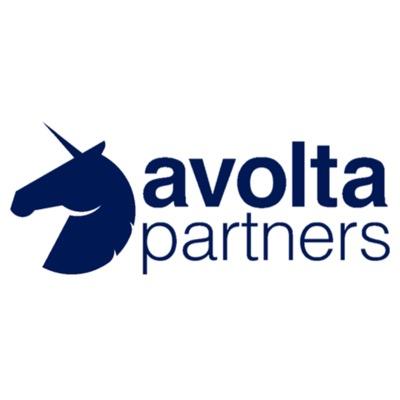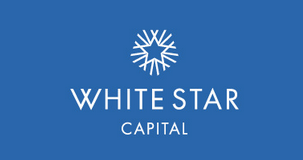VCs measure the performance of startups all day long. Many of the metrics that are used to evaluate companies are reasonably well understood and publicly known.
But few people realize how VC funds are measured — and how easy it is to find benchmarks and specific performance of individual funds.
If a VC fund has been fully invested and all proceeds have been returned to Limited Partners, these metrics are pretty straightforward. You can look at the overall multiple of invested capital and calculate the actual IRR of a limited partner’s cash flow and then benchmark it against other funds and other asset classes over a similar period.
But it takes a very long time to determine the full performance of a VC fund, usually more than 10 years. When funds aren’t fully realized, it means that some of the dollars that have been invested may have value in the form of private company stock but have not been liquidated. And some committed capital may even be uncalled because the fund is still making follow-on investments.
Here’s how investors track VC performance before funds are fully realized. We’ll go through the metrics that matter, how that influences investor behavior, and look at some (potentially surprising) actual performance data.
The Metrics That Matter to VCs
Even though these are intermediate figures, VC performance at a high level tends to be measured through three metrics: TVPI, DPI, and IRR.
TVPI
TVPI is short for Total Value to Paid In capital multiple. Essentially, it’s the total value of the fund’s holdings (realized and unrealized) divided by the capital that has been called by the fund (or paid in by the LPs). One can think of this somewhat like a multiple, although it’s a little bit different since it also is inclusive of the effect of fees, recycling, etc.
Quick example, let’s say a VC has a $100M fund. If they have called 50% of the capital ($50M), returned $20M to their investors from exits, and the remaining portfolio is worth $55M, then TVPI = ($20 + $55) / $50 = 1.5.
DPI
DPI is Distributions to Paid in Capital multiple. This is how much money a VC fund has sent back to LPs divided by the amount of money the LP has paid into the fund. The denominator for TVPI and DPI are the same. Ultimately, when a fund is all said and done, DPI is effectively the fund’s multiple.
When you hear about 3X funds, 7X funds, etc., this should be DPI. Although some investors like to brag about their impressive TVPI like it’s a true fund multiple, even though the majority of the value has yet to be realized (more on this later).
IRR
IRR is the Internal Rate of Return for the fund. It is an approximation of the the rate of appreciation of the fund’s assets. This can theoretically be used to compare the performance of a VC fund to other asset classes and even public market indexes.
The problem is that this is a somewhat fake number since most private stock is not liquid. So this IRR represents theoretical gains, but not true gains. True fund IRR will ultimately be based on the actual flow of cash in and out of an LP’s account.
How Investors Think About These Metrics
I’m going to share a few general thoughts on how LPs and managers think about these metrics, and then get on to some really fun stuff. 🙂
These metrics are useful, but typically only after some time has transpired.
How a firm is progressing on these metrics during its first few years is probably very minimally correlated to long term fund performance (I’m sure some actual LPs have data they can share here on how early performance correlates with actual performance). Overall though, you don’t get a good picture of the performance of the fund until the funds are 5+ years old or more, and their underlying companies are much more mature.
VC funds are typically compared to each other, and also measured in absolute terms.
Funds are usually compared to other funds of their “vintage” — ones that started investing at approximately the same time (or at least the same year). Often, you hear about funds being put into “quartiles” or “deciles.” The idea is that, for any of these metrics, if you ranked all the funds of a given vintage from top to bottom, does a fund fall into the top quartile, second quartile, etc.
VC fund performance is also considered by LPs in absolute terms. For example, if you are in the top quartile of your vintage of VC funds, your performance could seem pretty solid. But if the absolute level of return is pretty mediocre (especially relative to investment options with lower risk or greater liquidity) then that isn’t all that great either.
In the early days of a fund, VCs tend to optimize for TVPI.
While it’s nice to have distributions, hopefully your best companies will only grow at a much faster rate than other assets, making it worthwhile to hold on and keep going vs. selling early. This is why VCs are known to have an incentive to say “no” to premature exits.
But in the long run, DPI is king. You can’t feed your family with TVPI, and you can’t spend IRR.
IRR is super funky in the early years, but important in the later years.
For example, if one were to optimize for short term IRR, they would never invest in a follow-on round. This is because following-on creates an additional cash out-flow for the LP, and a greater proportion of capital being held at cost vs. showing appreciation. Incidentally, this may be one reason that a number of early seed funds that had very limited reserves showed terrific IRR relative to large VC funds that tend to follow-on heavily.
In the long term, this strategy may not yield better returns despite strong early IRR. I like to say that IRR is pretty irrelevant in the early years of a fund, but pretty relevant in the later years. This is because GPs should be mindful of the time value of money. The longer it takes to send money home, the higher the bar should be for return. This is because money sent back earlier could be invested elsewhere by one’s Limited Partners.
Evaluating Real VC Performance Data
Now, let’s move on to the fun part — it turns out you can get a pretty good picture of the performance of VC funds from some publicly available data.
One of the best sources is Cambridge Associates, which gathers data from a wide range of VC and PE funds and publishes benchmark data on a regular basis. The data that is available publicly is a few quarters old, but is pretty eye-opening for those who don’t look at this regularly.
Here is the report from 2017 Q2. Within this report, you will find performance figures relative to other VCs as well as benchmarks relative to the overall market.
For now, let’s just focus on the data on pages 16 and 17, which I’ve recreated below for easy reference. They show TVPI and DPI by vintage year. We’re going to focus on the Median, Upper Quartile, and Lower Quartile columns, but it’s worth checking out the full report for more eye-opening info.

First, look at funds that are 2007 vintage funds. This is an interesting vintage because it is 10+ years old, so theoretically, most of the capital should already be returned to LPs. Also, these funds had to endure the financial crisis, which was probably challenging at first, but should have presented some pretty good investment opportunities and a subsequently strong bull market over the next 10 years.
So, how have these funds done?
In terms of DPI, not good. The median fund has returned 1.04 DPI — they’ve basically given back the money. The top quartile fund is at a 1.68. Nowhere near the theoretical 3X that most funds say they target. Oof.
The TVPI data is a little better. The median is 1.77 and the top quartile is 2.54. The bottom quartile is 1.4, so at least it’s still “in the money.”
Basically, all of these funds are sitting on large, unrealized value drivers that will make the difference between good or terrible performance.
Given the run up in late-stage private valuations in recent years, the bear case is that a lot of these funds are actually going to do much worse than their current TVPI, as some of these paper valuations are very very shaky. Indeed, as we’ve seen more and more unicorns go public or get acquired at a value under their last private valuation round, these funds will effectively disappoint investors when DPI does not live up to the high-water-mark of TVPI.
The bull case is that one great company can create great realized returns and maybe terrific upside beyond the current TVPI for a handful of these funds. There will certainly be great funds out of this vintage, and if you saw the data for the top 5% of funds, it would be quite impressive.
But overall, it’s interesting to see how mediocre the performance of the asset class looks over what should have been a pretty good time period. For context, the SP500 during that time period multiplied 1.65X from July 1, 2007 (the peak of the market) to July 1, 2017. So, this is pretty much at the median performance level based on TVPI that could have been generated by an ETF or index fund with full liquidity.
What if you go backward or forward in time?
If you go backward in vintage, these funds should be even more mature since more time has transpired. But it’s more likely that a fund’s portfolio may have hit a hiccup or a total brick wall during the economic crisis of 2008. You see that median and top quartile TVPI actually is lower for most vintages over the 10 years before 2007. It’s only until you get to the 1996 and earlier vintages that you see the 2–3X fund returns that you typically think of for a decent, but not exceptional, venture fund. And from 1998–2006, the median venture fund distributed less than 1X paid in capital. As an asset class, VC was really pretty brutal during that time.
How about if you look forward?
Overall, the TVPI story looks a little better with a number of top quartile thresholds at north of 1.5X and close to 2X midway through the life if these funds. The lower quartile TVPI is positive for most vintages, which is also a decent sign. DPI is still pretty bleak, but the closer you get to recent vintages, the less DPI is really indicative of the relative performance of a fund.
The looming question is whether funds with great TVPI will actually see that value or greater when exits actually come?
When I speak to LPs casually, what I hear is that there are quite a few funds with very strong TVPI, but there is perceived to be fairly significant risk that those values will not come to fruition because of very high valuations, a challenging IPO market, and limited M&A options.
Alternative liquidity options like the Softbank Vision fund may bail some investors out, but for the most part, I don’t see great returns being driven by those types of outcomes except in very few circumstances.
Thoughts for Founders
So, what’s the point of all this, especially if you aren’t a VC?
Much like other posts I’ve written that try to clarify some of the inner workings of VC math, I think it’s helpful to understand the underlying business model of those that provide you capital. This drives the incentives of investors, especially in situations where they may be strangely at odds with those of founders.
Specifically, I think there are a few takeaways:
1) It’s always shocking to people outside of the industry how much the VC industry also follows a power law.
The best performing funds are really that much better than the median fund or even a top quartile fund. Top quartile performance is usually solid, but not exceptional, in terms of absolute returns.
When you hear about funds that generate 5X realized returns or greater, one should realize that those really are unicorns in the true sense of the world. One would also be shocked to know how many name-brand funds have not generated a better than 3X realized return in a long time.
2) The fact that there has been such a large delta between TVPI and DPI for so long, even for mature funds, shows that exits are hard to come by.
Keep this in mind — it’s been true for a long long time. The concept of a company being held at a higher valuation than it will ultimately exit for is not a new one. Maybe markets will open up more in the time to come, but it’s equally or more likely that we’ll hit an economic downturn that will make exits even harder.
Take exit opportunities seriously, and bring on investors, board members, or mentors who have been through this to coach you through a sale process. And really congratulate founders you know who have been able to get a profitable sale done. It’s hard.
3) The fact that VCs are measured by these internal benchmarks can create some misalignment with founders from time to time.
For example, VCs have an incentive to make sure that successful companies raise more money from new outside investors at higher prices, as this allows them to increase the value of their own position in the company.
This is great if you are interested in raising more capital, too, but it can lead to raising too much money too fast at excessively high valuations if not kept in check. It’s also part of the reason why VCs don’t usually lead inside rounds unless they have to, because it’s hard to justify increasing the value of their holdings if they are marking themselves up.
Ironically, some of the best-performing funds are the ones that resist these incentives. They realize that raising more capital increases their effective post-money on their investment, and so are mindful of external capital unless it really has a multiplicative impact on the value of the company.
And those that are able to lead multiple rounds also realize that intermediate holding values matter a lot less than how much of a winning company they own at exit. If you have a really big fund, and you really believe in a company, and you don’t feel external pressure to mark up your investments, why would you let anyone else buy additional ownership of the company instead of buying more yourself? This is fairly rational strategy, but one only a few funds tend to employ.



